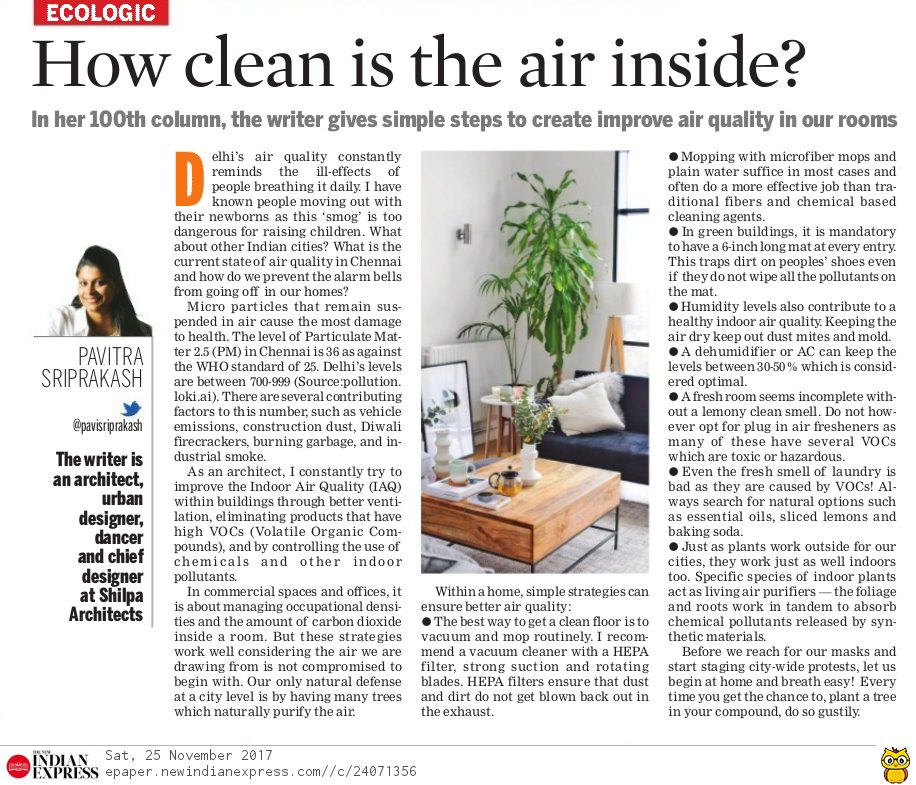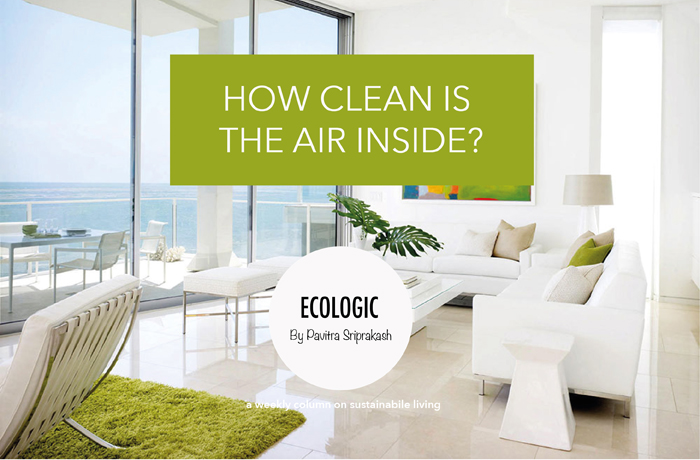Source : www.impressiveinteriordesign.com
November 25th 2017, New Indian Express: ECOLOGIC- Pavitra Sriprakash, the Chief Designer and Director of Shilpa Architects writes on ways to maintain good air quality indoors.

Full Article
How clean is the air inside?
Delhi’s air quality constantly reminds the ill-effects of people breathing it daily. I have known people moving out with their newborns as this ‘smog’ is too dangerous for raising children. What about other Indian cities? What is the current state of air quality in Chennai and how do we prevent the alarm bells from going off in our homes?
Micro particles that remain suspended in air cause the most damage to health. The level of Particulate Matter 2.5 (PM) in Chennai is 36 as against the WHO standard of 25. Delhi’s levels are between 700-999 (Source:pollution.loki.ai). There are several contributing factors to this number, such as vehicle emissions, construction dust, Diwali firecrackers, burning garbage, and industrial smoke.
As an architect, I constantly try to improve the Indoor Air Quality (IAQ) within buildings through better ventilation, eliminating products that have high VOCs (Volatile Organic Compounds), and by controlling the use of chemicals and other indoor pollutants.
In commercial spaces and offices, it is about managing occupational densities and the amount of carbon dioxide inside a room. But these strategies work well considering the air we are drawing from is not compromised to begin with. Our only natural defense at a city level is by having many trees which naturally purify the air.
Within a home, simple strategies can ensure better air quality:
- The best way to get a clean floor is to vacuum and mop routinely. I recommend a vacuum cleaner with a HEPA filter, strong suction and rotating blades. HEPA filters ensure that dust and dirt do not get blown back out in the exhaust.
- Mopping with microfiber mops and plain water suffice in most cases and often do a more effective job than traditional fibers and chemical based cleaning agents.
- In green buildings, it is mandatory to have a 6-inch long mat at every entry. This traps dirt on peoples’ shoes even if they do not wipe all the pollutants on the mat.
- Humidity levels also contribute to a healthy indoor air quality. Keeping the air dry keep out dust mites and mold.
- A dehumidifier or AC can keep the levels between 30-50% which is considered optimal.
- A fresh room seems incomplete without a lemony clean smell. Do not however opt for plug in air fresheners as many of these have several VOCs which are toxic or hazardous.
- Even the fresh smell of laundry is bad as they are caused by VOCs! Always search for natural options such as essential oils, sliced lemons and baking soda.
- Just as plants work outside for our cities, they work just as well indoors too. Specific species of indoor plants act as living air purifiers — the foliage and roots work in tandem to absorb chemical pollutants released by synthetic materials.
Before we reach for our masks and start staging city-wide protests, let us begin at home and breath easy! Every time you get the chance to, plant a tree in your compound, do so gustily.
About the author

Pavitra Sriprakash (@pavisriprakash), the Director and Chief Designer of Shilpa Architects, is an Architectt, Urban Designer, Dancer and Artist. She writes a weekly sustainability column for The New Indian Express titled ECOLOGIC.



